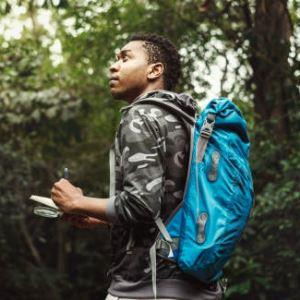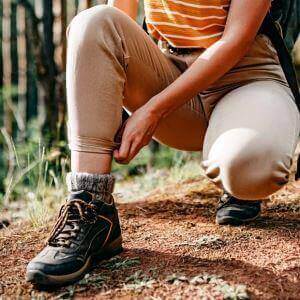 Located within Kenya's Great Rift Valley, the Suswa Caves are one of the country’s most intriguing natural formations. These volcanic caves stretch across the vast, rugged terrain of Mount Suswa, a double-cratered shield volcano known for its dramatic landscapes and geothermal features. US tourists, in growing numbers, have been drawn to this unique site not only for its raw beauty but also for its sense of untouched wilderness and rich cultural heritage. The Suswa Caves are best known for their impressive lava tube systems. These underground passages have been naturally formed by flowing molten lava and include chambers like the "Baboon Parliament," where local baboon troops often retreat for the night. Inside the caves, visitors encounter volcanic rock patterns, bat colonies, and ancient rock art that reflect both geological and anthropological significance. It’s a surreal space, made more meaningful by the quiet reverence of the surrounding Maasai communities who hold the area sacred. Getting to the Suswa Caves from Nairobi is part of the adventure. The 120-kilometer journey offers sweeping views of the escarpment before transitioning to rugged off-road trails. A four-wheel drive is essential for reaching the caves themselves, especially during the rainy seasons when the paths become challenging. However, the payoff is well worth the effort. The panoramic vistas from the outer crater rim and the exploratory hikes into the tube caves leave lasting impressions. The best time to explore is during Kenya’s dry seasons: January to February and June to October. These months offer optimal hiking conditions and the clearest views of the crater and surrounding plains. First-time visitors are advised to come prepared carrying water, sun protection, and sturdy footwear and to hire a local guide. These guides not only ensure safety through the labyrinthine cave routes but also provide context and stories that deepen the overall experience. Homejoy Safari Adventures specializes in guided trips to Suswa Caves, balancing accessibility with a focus on cultural respect and environmental conservation. Whether you're a photographer, nature enthusiast, or curious traveler, Suswa offers an unforgettable off-the-beaten-path experience that contrasts sharply with more commercialized destinations. With growing interest from American visitors, Suswa Caves have become a leading choice for those seeking both adventure and authenticity. The site invites travelers to disconnect from the noise of modern life and immerse themselves in the primal rhythms of earth and culture. Nestled in the heart of Kenya’s Great Rift Valley, Suswa offers an escape into ancient landscapes, where lava tunnels twist beneath volcanic soil and wildlife moves freely above. This destination is quickly becoming a favorite among tourists from the US who value meaningful, experience-rich travel. Unlike mainstream tourist hotspots, Suswa provides space for reflection, exploration, and cultural engagement. The presence of the local Maasai community adds a layer of human connection, grounding the journey in real stories and traditions. Whether hiking across the crater rim or listening to silence inside the caves, visitors often leave with more than just photos they leave with perspective.
Located within Kenya's Great Rift Valley, the Suswa Caves are one of the country’s most intriguing natural formations. These volcanic caves stretch across the vast, rugged terrain of Mount Suswa, a double-cratered shield volcano known for its dramatic landscapes and geothermal features. US tourists, in growing numbers, have been drawn to this unique site not only for its raw beauty but also for its sense of untouched wilderness and rich cultural heritage. The Suswa Caves are best known for their impressive lava tube systems. These underground passages have been naturally formed by flowing molten lava and include chambers like the "Baboon Parliament," where local baboon troops often retreat for the night. Inside the caves, visitors encounter volcanic rock patterns, bat colonies, and ancient rock art that reflect both geological and anthropological significance. It’s a surreal space, made more meaningful by the quiet reverence of the surrounding Maasai communities who hold the area sacred. Getting to the Suswa Caves from Nairobi is part of the adventure. The 120-kilometer journey offers sweeping views of the escarpment before transitioning to rugged off-road trails. A four-wheel drive is essential for reaching the caves themselves, especially during the rainy seasons when the paths become challenging. However, the payoff is well worth the effort. The panoramic vistas from the outer crater rim and the exploratory hikes into the tube caves leave lasting impressions. The best time to explore is during Kenya’s dry seasons: January to February and June to October. These months offer optimal hiking conditions and the clearest views of the crater and surrounding plains. First-time visitors are advised to come prepared carrying water, sun protection, and sturdy footwear and to hire a local guide. These guides not only ensure safety through the labyrinthine cave routes but also provide context and stories that deepen the overall experience. Homejoy Safari Adventures specializes in guided trips to Suswa Caves, balancing accessibility with a focus on cultural respect and environmental conservation. Whether you're a photographer, nature enthusiast, or curious traveler, Suswa offers an unforgettable off-the-beaten-path experience that contrasts sharply with more commercialized destinations. With growing interest from American visitors, Suswa Caves have become a leading choice for those seeking both adventure and authenticity. The site invites travelers to disconnect from the noise of modern life and immerse themselves in the primal rhythms of earth and culture. Nestled in the heart of Kenya’s Great Rift Valley, Suswa offers an escape into ancient landscapes, where lava tunnels twist beneath volcanic soil and wildlife moves freely above. This destination is quickly becoming a favorite among tourists from the US who value meaningful, experience-rich travel. Unlike mainstream tourist hotspots, Suswa provides space for reflection, exploration, and cultural engagement. The presence of the local Maasai community adds a layer of human connection, grounding the journey in real stories and traditions. Whether hiking across the crater rim or listening to silence inside the caves, visitors often leave with more than just photos they leave with perspective.
Average Costs and Essentials for Visiting Suswa Caves
| Item | Average Cost (USD) | Notes |
|---|---|---|
| Entry Fee (per person) | $20 | Payable at Mt. Suswa Conservancy gate |
| Guide Services | $30 - $50 | Group rates available |
| Camping Fee | $10 | Bring your own gear |
| 4x4 Vehicle Rental | $100 - $150/day | Necessary for rocky terrain |
| Packed Lunch | $5 - $10 | Available in Narok or Nairobi |
How to Get to Suswa Caves from Nairobi; The Best Routes
Reaching the Suswa Caves from Nairobi is a scenic and enriching journey that offers travelers a glimpse into Kenya’s striking geographical diversity. Located approximately 120 kilometers west of the capital city, Mount Suswa and its caves can be accessed by road, with the trip taking about 2.5 to 4 hours depending on the mode of transportation and road conditions. The route begins with the Nairobi-Narok Highway, branching off toward Suswa town before transitioning into a rugged off-road trail that leads to the conservancy. This final stretch requires a sturdy vehicle, ideally a four-wheel drive, particularly during Kenya’s rainy seasons when the terrain can become muddy and difficult to navigate. Private transportation offers the most flexibility and comfort, making it the preferred choice for many international tourists. However, for budget-conscious travelers, a combination of public transport to Suswa town followed by a hired local taxi or boda-boda (motorcycle taxi) is a viable alternative. Guided tour packages, often provided by adventure companies like ours, offer the added benefit of structured itineraries and experienced guides who understand the landscape, ensuring both safety and convenience. These packages typically include transport, meals, park fees, and interpretive cave tours. Whichever route you choose, the journey offers more than just transit. Along the way, you’ll encounter panoramic views of the Great Rift Valley, wildlife in the open savannah, and small towns where you can experience authentic rural Kenyan life. As you approach the mountain, the landscape transforms dramatically giving way to ancient lava fields, deep craters, and eventually the awe-inspiring entrance to the Suswa cave system. Because the route includes rough terrain and minimal signage, it’s advisable to plan ahead, carry offline navigation tools, and inform someone of your travel plans. Arriving early in the day not only ensures good lighting for photography but also allows ample time to explore the caves and surrounding trails before dusk. The journey from Nairobi to Suswa is more than a simple commute; it is part of the adventure itself, setting the stage for a profound encounter with Kenya's unique natural beauty. As travelers leave behind the urban bustle of Nairobi, the changing landscapes serve as a prelude to the volcanic majesty of Mount Suswa. The road gradually gives way to open plains, scattered wildlife, and sweeping Rift Valley vistas that stir the senses long before the caves come into view. Whether you choose to drive independently, rely on public transit, or take advantage of a curated tour, the route itself provides a rich travel experience. The bumpy, unpaved paths closer to the conservancy test your spirit of adventure, making the arrival at the ancient lava tubes feel all the more rewarding. Each mode of transport presents its own rhythm and pace, giving every traveler a tailored start to what is sure to be a deeply memorable exploration of one of Kenya’s most fascinating natural wonders.
Discover the Enchantment of Suswa Caves: A Hidden Natural Wonder
Located in Kenya's Great Rift Valley, Suswa Caves are a geological marvel attracting travelers with a sense of adventure and curiosity. These hidden caves, formed by volcanic activity from Mount Suswa, are gaining popularity, especially among tourists from the US who seek off-the-beaten-path destinations. The combination of dramatic lava tubes, wildlife, and strong ties to Maasai culture make this site one of the most intriguing in East Africa.
- Unique Lava Tube Formations: The caves are made up of extensive lava tubes that twist beneath the earth, forming multiple chambers. These formations, shaped over thousands of years, create surreal underground landscapes that are rare and exciting to explore.
- Cultural Significance: The Maasai people consider the caves sacred and use them for ceremonies and shelter. Visiting with a local guide provides context to this cultural importance, enhancing the visitor experience.
- Rich Wildlife Encounters: Baboons, bats, and hyenas are among the species that inhabit or pass through the area. One chamber is famously known as the "Baboon Parliament," where baboons gather at dusk, making for an unforgettable sight.
- Accessibility and Scenic Routes: Suswa is approximately a three-hour drive from Nairobi. The journey offers stunning views of the Rift Valley escarpment, and although the last leg requires a 4x4 vehicle, the effort is well worth the reward.
- Perfect for Hiking and Photography: The trails around Mount Suswa range from beginner to moderate, offering panoramic views and incredible photo opportunities, particularly at sunrise and sunset.
From its striking volcanic terrain to its deep-rooted cultural stories, Suswa Caves deliver a unique adventure that appeals to both nature lovers and culturally curious explorers. Whether you go independently or through a curated experience with us, a visit to Suswa promises connection, discovery, and awe in equal measure.
Which is the Best Time to Visit Suswa Caves in Kenya
The right time to visit Suswa Caves is during the dry seasons, which run from January to February and June to October. These periods offer favorable weather conditions, making the caves accessible and the surrounding trails safer for exploration. Dry paths allow for comfortable hiking, better visibility inside the caves, and a more enjoyable overall experience. The absence of rain also means fewer chances of encountering muddy and slippery trails, especially along the rugged paths leading to the cave entrances and crater rims. From March to May, the region experiences long rains, which can make access roads nearly impassable and hikes more challenging. The heavy rainfall often causes flooding within the lava tubes and makes the terrain hazardous. Similarly, November and December bring short rains that can disrupt travel plans with their unpredictability. Although not as intense as the long rains, these months are considered a fair time to visit but require flexibility and caution. Travelers planning a photography-focused or hiking-intensive trip will find the dry months more rewarding. Sunrises and sunsets during these periods cast beautiful shadows and golden hues across the crater, offering dramatic lighting ideal for photography. Wildlife is also more visible near waterholes, and birdwatching becomes easier in the clearer weather. Temperatures during the dry seasons range from 20°C to 28°C (68°F to 82°F), which is pleasant for outdoor exploration. Early mornings and late afternoons are the most comfortable times of day for hiking. These seasons also align with Kenya's peak tourism months, so booking early, especially for guided tours, is advised. Visiting Suswa during the dry season not only ensures a safer trip but also allows you to fully appreciate the majesty of its volcanic formations, the diversity of its wildlife, and the depth of its cultural heritage. Whether you're venturing into the darkness of the lava tubes or standing on the crater rim watching the valley unfold below, timing your visit right can turn a great journey into an unforgettable adventure.
Why Suswa Caves Travel Tips for First-Time Visitors Matter
For many first-time visitors, exploring the Suswa Caves is a dream adventure but without the right preparation, it can easily become overwhelming. Located in a remote part of the Rift Valley, the caves sit in a rugged volcanic landscape where conditions change rapidly, and basic amenities are limited. Travel tips help visitors avoid common mistakes and make the most of this unique destination. Understanding what to pack, how to respect local culture, and how to move around the terrain can transform a simple trip into a life-enriching experience.
- Pack light, but wisely: Essential items include durable hiking shoes with good grip, a reliable flashlight or headlamp for cave navigation, sunscreen, insect repellent, a wide-brimmed hat, and refillable water bottles. These items not only enhance comfort but also ensure safety in a place where supplies aren't readily available.
- Hire a local guide: The cave network is vast and unmarked. Getting lost is a real risk. A local guide brings more than navigation—they share folklore, ecological insights, and cultural context that deepen your connection with the place.
- Respect local customs: The Maasai people who inhabit this area consider parts of Mount Suswa sacred. Observing simple courtesies like asking permission before taking photos, dressing modestly, and not entering certain areas without consent shows respect and earns goodwill.
- Prepare for basic amenities: There are no convenience stores or cafes near the caves. Visitors should carry all essentials, including snacks, drinking water, tissue, and first-aid supplies. The remote nature of the location calls for self-reliance.
- Mobile network is patchy: Mobile reception in Suswa is unreliable at best. It's advisable to download maps for offline use and share your travel plans with someone before departure. Paper maps and printed itineraries also come in handy.
By following these practical travel tips, first-time visitors can enjoy the full wonder of the Suswa Caves without unnecessary discomfort or risk. These thoughtful preparations not only ensure personal safety but also reflect an understanding and appreciation of the environment and culture you're entering. Whether you're coming for the geological marvels, the photography opportunities, or the immersive cultural experience, a well-prepared visit to Suswa will leave you with vivid memories and a deep sense of fulfillment.
Most Adventurous Hiking Trails Around Suswa Caves for Beginners
For those new to hiking or simply looking for a relaxed outdoor experience, Suswa Caves offers beginner-friendly trails that still capture the wild charm of Kenya’s volcanic landscapes. Although the terrain surrounding Mount Suswa is rugged and remote, several hiking paths have been identified that suit travelers seeking light to moderate adventure without requiring intense physical conditioning. These trails are particularly popular among families, photographers, and cultural tourists who wish to explore the area’s natural beauty without venturing too far into technical terrain.
- Lava Tube Loop Trail: This trail loops around the main cave system and is one of the easiest hikes available in the region. With a relatively flat gradient and a length of approximately 3 kilometers, it allows beginners to get up close to the famous lava tubes and explore their openings safely. It's perfect for first-time cave explorers who want to understand the structure and history of the volcanic formations without the need for specialized gear.
- Baboon Parliament Trail: This trail leads to one of the most iconic features of Suswa Caves Baboon Parliament, a cave chamber frequently used by baboons as a shelter during the night. The path involves a gentle incline and is short enough to complete within an hour. Along the way, hikers are treated to sightings of local flora and fauna, as well as sweeping views of the surrounding valley. It’s a great option for nature lovers who enjoy wildlife observation alongside their walk.
- Crater Rim Walk: This is a slightly more challenging trail but still within reach for confident beginners. The route follows the outer rim of Mount Suswa’s crater and rewards hikers with spectacular panoramic views of the Great Rift Valley. The path may have uneven surfaces and some elevation gain, so proper hiking shoes are advised. The vistas from the rim are particularly stunning during sunrise and sunset, making this trail a favorite for photographers and sunrise chasers.
No matter which trail you choose, it’s important to start your hike early in the day to avoid the midday heat. Most trails are not officially marked, so going with a guide is highly recommended, especially for those unfamiliar with the area. Guides not only enhance your safety but also enrich the journey with stories about the land, geological insights, and cultural context. These beginner trails provide a well-rounded introduction to Suswa’s unique landscape, allowing travelers to experience its wonders at a comfortable and enjoyable pace.
The Rise in Popularity: Why Affordable Tour Packages to Suswa Caves in Kenya Appeal to US Travelers
 Suswa Caves are quickly becoming one of Kenya’s most talked-about hidden gems, especially among US travelers who seek unique, culturally rich, and adventurous destinations. As tourism patterns shift toward more immersive and authentic experiences, Suswa has emerged as a compelling alternative to more mainstream safari parks. One key factor behind this growing interest is the availability of affordable tour packages that make the journey not just feasible but deeply rewarding. Many US travelers are drawn to destinations that combine natural beauty with cultural depth, and Suswa checks both boxes. The lava tube caves, sweeping views of the Great Rift Valley, and the warm hospitality of the Maasai communities create a rich, multidimensional experience. Unlike heavily trafficked tourist sites, Suswa offers space for quiet reflection, off-grid exploration, and meaningful engagement with local traditions. Affordable packages have played a significant role in bringing this opportunity within reach for more travelers. Tour companies like ours offer value-driven packages that include round-trip transportation, entry fees, guided cave tours, meals, and sometimes even camping gear. These bundled services reduce the planning burden and provide cost transparency key factors that appeal to international travelers unfamiliar with the Kenyan landscape. Moreover, the presence of a knowledgeable guide ensures safety and enriches the journey with insights into the area’s geology, ecology, and history. The pricing for these packages typically ranges from $90 to $150 per person for a full-day or overnight experience, making them competitive when compared to more commercial tours in Kenya. The affordability factor has resonated particularly with younger US travelers, digital nomads, and adventure-seeking families who prioritize value and authenticity over luxury. In addition, some tour providers allow for customization, enabling travelers to add photography sessions, hiking segments, or cultural visits to Maasai homesteads. What sets these packages apart is not just the price point but the philosophy behind them. Operators focus on low-impact, community-integrated tourism, which means that proceeds support local livelihoods and conservation initiatives. This responsible travel model enhances the experience for visitors while benefiting the local economy and environment. In a world where travel is increasingly about experiences rather than just destinations, Suswa stands out. Affordable tour packages offer a gateway to one of Kenya’s most intriguing natural sites without compromising on depth or authenticity. For US tourists seeking a raw, enriching, and unforgettable journey, Suswa with its mystic caves and layered history is proving to be a destination worth every mile.
Suswa Caves are quickly becoming one of Kenya’s most talked-about hidden gems, especially among US travelers who seek unique, culturally rich, and adventurous destinations. As tourism patterns shift toward more immersive and authentic experiences, Suswa has emerged as a compelling alternative to more mainstream safari parks. One key factor behind this growing interest is the availability of affordable tour packages that make the journey not just feasible but deeply rewarding. Many US travelers are drawn to destinations that combine natural beauty with cultural depth, and Suswa checks both boxes. The lava tube caves, sweeping views of the Great Rift Valley, and the warm hospitality of the Maasai communities create a rich, multidimensional experience. Unlike heavily trafficked tourist sites, Suswa offers space for quiet reflection, off-grid exploration, and meaningful engagement with local traditions. Affordable packages have played a significant role in bringing this opportunity within reach for more travelers. Tour companies like ours offer value-driven packages that include round-trip transportation, entry fees, guided cave tours, meals, and sometimes even camping gear. These bundled services reduce the planning burden and provide cost transparency key factors that appeal to international travelers unfamiliar with the Kenyan landscape. Moreover, the presence of a knowledgeable guide ensures safety and enriches the journey with insights into the area’s geology, ecology, and history. The pricing for these packages typically ranges from $90 to $150 per person for a full-day or overnight experience, making them competitive when compared to more commercial tours in Kenya. The affordability factor has resonated particularly with younger US travelers, digital nomads, and adventure-seeking families who prioritize value and authenticity over luxury. In addition, some tour providers allow for customization, enabling travelers to add photography sessions, hiking segments, or cultural visits to Maasai homesteads. What sets these packages apart is not just the price point but the philosophy behind them. Operators focus on low-impact, community-integrated tourism, which means that proceeds support local livelihoods and conservation initiatives. This responsible travel model enhances the experience for visitors while benefiting the local economy and environment. In a world where travel is increasingly about experiences rather than just destinations, Suswa stands out. Affordable tour packages offer a gateway to one of Kenya’s most intriguing natural sites without compromising on depth or authenticity. For US tourists seeking a raw, enriching, and unforgettable journey, Suswa with its mystic caves and layered history is proving to be a destination worth every mile.
Photography Spots Around Suswa Caves in Kenya You Can’t Miss
For photography enthusiasts, Suswa Caves offer an unrivaled opportunity to capture the wild, volcanic beauty of Kenya’s Rift Valley in its most natural form. The area around Mount Suswa is rich with dramatic landscapes, underground wonders, and rare wildlife interactions, making it a dream destination for both amateur and professional photographers. Whether you're interested in geological textures, animal behavior, or sweeping vistas, Suswa delivers moments worth framing. The key to successful photography here lies in timing, equipment readiness, and knowing where to find those breathtaking angles.
- The Outer Crater Rim: This elevated viewpoint provides a wide, uninterrupted panorama of the surrounding plains and escarpments. The best times to shoot here are sunrise and sunset, when the lighting casts long shadows and paints the sky with hues of orange and gold. Photographers often use wide-angle lenses at this spot to emphasize the expansive nature of the terrain.
- The Lava Tunnels: These underground corridors offer stunning contrasts of light and dark. Natural skylights, created by openings in the rock, allow beams of sunlight to cut through the darkness, creating dramatic, moody compositions. A tripod and long exposure settings are ideal for capturing the depth and texture inside these tunnels.
- Baboon Parliament Cave: One of the most unique wildlife photo opportunities in Suswa, this cave is named for the baboon troops that sleep there at night. Photographers patient enough to observe from a safe distance may capture candid images of the baboons settling in or emerging in the early morning. Low-light lenses and high ISO settings help capture the moment without disturbing the animals.
- Sunset over Mount Suswa: There is no shortage of vantage points around the mountain to watch the sun dip below the horizon. These sunset shots are enhanced by the volcanic silhouette of Mount Suswa and the golden illumination of the rugged terrain. A polarizing filter can help control glare and deepen the color saturation.
Whether you are capturing landscapes, wildlife, or the intricate patterns of lava rock, always communicate with your guide to find safe yet optimal shooting locations. Being respectful of the natural environment and local culture not only keeps you safe but also preserves the integrity of the place for future explorers. Photography at Suswa isn’t just about the pictures it’s about storytelling through images that reflect the raw beauty, silence, and mystery of one of Kenya’s most captivating landscapes.
Suswa Caves Safety Tips for Tourists Visiting Kenya
Visiting the Suswa Caves is an exciting and enriching experience, but it’s essential to prioritize safety, especially for first-time explorers or those unfamiliar with Kenya's volcanic terrain. Suswa’s unique environment composed of rugged trails, underground chambers, and unpredictable wildlife requires visitors to be both cautious and well-prepared. Fortunately, with the right safety measures in place, travelers can fully enjoy their adventure while minimizing risks.
- Wear proper footwear: The terrain around Mount Suswa is rough and uneven, featuring loose rocks, sharp lava edges, and sometimes slippery slopes. Wearing sturdy, closed-toe hiking shoes with good ankle support is crucial. Good footwear helps prevent injuries and ensures steady footing on challenging sections of the trail.
- Bring a flashlight or headlamp: The lava tubes and chambers of the Suswa Caves are completely dark inside. Without artificial light, visibility drops to zero. A strong flashlight or headlamp is not just useful it’s essential. Carrying an extra set of batteries is also advisable for longer explorations or in case of equipment failure.
- Stay with your guide: The cave system is complex, and many of its passages look similar, making it easy to become disoriented. Local guides know the safe routes, entrances, and exits, and can navigate through potentially confusing paths. They also share valuable cultural and geological knowledge, enhancing the experience while keeping the group safe.
- Carry a first aid kit: Cuts, scrapes, insect bites, and minor burns can occur during hikes and cave explorations. A basic first aid kit with bandages, antiseptic cream, antihistamines, and pain relievers is a smart addition to your pack. Tour groups usually have kits on hand, but having personal supplies is always a good idea.
- Avoid exploring alone: Even seasoned hikers should avoid venturing into the caves or surrounding trails by themselves. Travel in groups or pairs and always inform someone outside the group of your intended route and return time. In case of an emergency, quick communication and assistance can make a critical difference.
- Check weather and terrain conditions: Before setting out, check local weather forecasts and ensure the trails are safe to use. During rainy seasons, paths become muddy and dangerous, increasing the likelihood of slips and falls.
By adhering to these safety tips, visitors can navigate Suswa’s fascinating cave systems and dramatic terrain with confidence. Being well-prepared not only prevents accidents but also allows travelers to relax and immerse themselves fully in the magic of Suswa.






